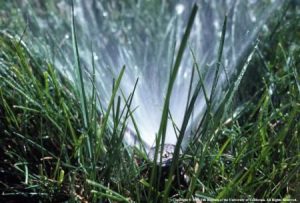Although many reservoirs in California store water for future use, our biggest drinking water storage area is the Sierra Nevada snowpack, which has been dwindling in capacity in recent warm years. Thus, our total storage capacity for domestic and agricultural use is decreasing. Published research is indicating that about 50% of our new future water needs must come from conservation of existing water resources since other sources will not be able to meet the future demand.
Rainfall records in the Sonora area from 1970 through 1985 and the Jamestown area from 1986 through water year 2008-09 indicate that we are currently in a short term dry period.
• The decade of the 1970’s averaged 31.2” of rain.
• The decade of the 1980’s averaged 31.5” of rain
• The decade of the 1990’s averaged 32.9” of rain
• In the first nine years of this decade the rainfall has only averaged 25.9” annually.
This decade has an approximate decrease of 19% over the previous 30 years of rainfall. Although short term records should not be an indication of longer term trends, we must be prepared to adjust to any changes in our water supply, whether short or long term.
Landscape Irrigation: Recent figures indicate that about 50% of current water use in the State is used for maintaining landscaping.
• Don’t wash your car – drop the vanity of a sparkling clean car and get used to a dirty one. (current restrictions state that hoses must have shut off nozzles)
• Never waste water in washing down your sidewalk or driveway (currently, this is prohibited as per current water restrictions). A broom and a little exercise will probably help us all live a little longer.
• Minimize the use of sprinkler systems since they lose so much water to evaporation (as per current water restrictions, run off is prohibited).
• Maximize the use of drip irrigation for as much of your landscape as possible. These systems bring water to soil and plants quickly without much chance for evaporation.
• Minimize the use of drip micro sprayers unless planting density is high and/or you are irrigating ground cover.
• Consider using soaker hose and drip tape for longer lines of closely spaced plants.
• Check drip irrigation systems on a weekly basis (or more often) for efficient operation. (As per current water restrictions; even number property address water on Tuesday, Thursday and Saturday, odd number property address water on Wednesday, Friday, and Saturday, and no watering on Monday).
• Water early in the morning or evening when the winds are calmer and evaporation is likely to be less. (as per current water restrictions, all irrigation shall occur between the hours of 7 pm and 10 am)
Collection of Rain Water: Collect and save as much rain water as possible going into a drought year. This can include a roof runoff tank collection system, damming of a small drainage into a pond or stock tank, or collection of downspout drainage into barrels or buckets for small gardens. Creation of topographic swales in your garden will also minimize direct runoff during the wet season and increase late winter and spring infiltration into the ground. Collection of rain water can supply from several hundred gallons to 4,000 to 5,000 gallons of water available for spring and early summer irrigation without being a burden on public systems or private wells.
Wise water use under drought conditions begins in the home and extends into the garden. It becomes a lifestyle that should continue even when drought conditions are not present; it’s the California lifestyle of the future.
Water restrictions stated reflect the water restrictions issued by Tuolumne Utility District as of April 28, 2015.
Al Dahlstrand is a University of California Cooperative Extension of Tuolumne County Master Gardener.


